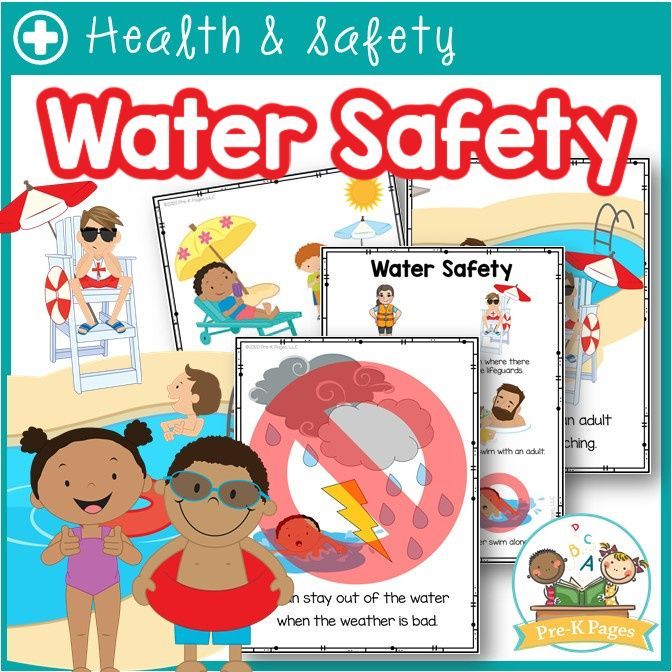
Water safety is an essential skill for children to master, especially as they grow and become more adventurous around water environments such as pools, lakes, and the ocean. One effective way to teach children water safety while keeping the experience enjoyable is through a fun and interactive water safety test. This guide will help you create and administer a comprehensive water safety test that is both educational and entertaining for your child.
Importance of Water Safety
Before delving into the specifics of the test, it’s crucial to understand why water safety is so important. Drowning is a leading cause of accidental death for children, and many of these tragedies can be prevented through proper education and training. Teaching children water safety skills helps them to be more aware of their surroundings, understand the risks, and know how to react in emergencies.
Preparing for the Water Safety Test
Preparation is key to ensuring the water safety test is effective and enjoyable. Here are some steps to take before starting the test:
Choose the Right Location
Select a Safe and Controlled Environment: Such as a local pool with lifeguards or a private pool where you can closely supervise.
Ensure the water depth is appropriate for your child’s swimming ability.
Gather Necessary Materials: Life jackets, pool noodles, floating devices, and other safety equipment.
Waterproof flashcards for rules and signals. Include fun items like toys and prizes for motivation.
Set Clear Objectives: Determine the key skills and knowledge you want your child to learn, such as swimming techniques, understanding water rules, and emergency response.
Structuring the Water Safety Test
A well-structured water safety test should cover several aspects of water safety, including basic swimming skills, knowledge of water rules, and emergency responses.
Below is a suggested structure:
Basic Swimming Skills
Floating: Teach your child to float on their back. This skill helps them stay calm and conserve energy if they find themselves in deep water. Make it fun by timing how long they can float or using a song to keep them relaxed.
Treading Water: Have your child practice treading water. This vital skill allows them to stay afloat and breathe while waiting for help. Turn it into a game by seeing who can tread water the longest.
Swimming Distance: Set a short distance for your child to swim, such as from one end of the pool to the other. This tests their ability to swim confidently and demonstrates their stamina. Create a mini-race to make it exciting.
Pool Rules: Quiz your child on basic pool rules, such as no running, no diving in shallow areas, and always swimming with a buddy. Make it interactive by asking them to explain why each rule is important. Use a reward system, like stickers, for correct answers.
Lifeguard Signals: Teach your child common lifeguard signals and what they mean. Use flashcards or mimic the signals for them to interpret. Turn it into a memory game to make learning more engaging.
Emergency Responses
Reaching Assist: Demonstrate how to perform a reaching assist using a pool noodle or a long object. Let your child practice reaching out to an imaginary person in distress. Make it fun by incorporating a toy that needs rescuing.
Throwing Assist: Show your child how to throw a floating device to someone in trouble. Use a weighted toy to simulate a person, and let them practice aiming and throwing the device accurately. Create a point system for hitting the target.
Calling for Help: Role-play different scenarios where your child needs to call for help. Emphasize the importance of staying calm and providing clear information. Use a toy phone or a real phone (in a safe manner) to practice making an emergency call.
Making the Test Fun and Engaging
The key to a successful water safety test is making it enjoyable and stress-free. Here are some tips to ensure your child has fun while learning:
Incorporate Games: Turn each skill into a game or challenge. For example, have a treasure hunt where they need to retrieve objects from the bottom of the pool, or set up a relay race that includes different safety skills. This keeps them engaged and excited to participate.
Use Positive Reinforcement: Offer small rewards for completing each task, such as stickers, certificates, or a special treat. Positive reinforcement will keep your child motivated and eager to participate. Celebrate their achievements and encourage them if they struggle with a particular skill.
Stay Positive and Encouraging: Encourage your/. child throughout the test and provide positive feedback. Celebrate their achievements, no matter how small, and reassure them if they struggle with a particular skill. Your support will boost their confidence and make the learning process more enjoyable.
Evaluating the Water Safety Test
After completing the water safety test, take some time to review how your child did. Here’s how to effectively evaluate the test:
Discuss Performance: Talk about what they did well and where they can improve. Be specific and constructive in your feedback.
Emphasize the importance of continuous practice and learning. Explain that water safety is a skill that needs regular reinforcement.
Plan Additional Practice: If they had trouble with certain skills, plan additional practice sessions to help them improve. For example, if they struggled with treading water, set aside time each week to practice this skill.
Reinforce Learning: Reinforce what they learned through regular review sessions. Use flashcards, games, and discussions to keep the information fresh in their mind.
Conclusion
Giving your child a fun water safety test is a wonderful way to reinforce essential skills and knowledge in a playful, supportive environment. By incorporating games, positive reinforcement, and interactive learning, you can ensure your child not only understands water safety but also enjoys the process. This approach will help them feel more confident and prepared, making their time in and around water both safer and more enjoyable.
Water safety is a critical skill that can save lives, and teaching it through fun and engaging methods will leave a lasting impact on your child. That is why I am suggesting this water safety test. Remember, the goal is not only to test their knowledge and skills but also to instill a lifelong respect for water safety. By making the experience enjoyable, you can foster a positive attitude towards learning and practicing these vital skills.
Life Saver Survival Swim School Teaches Young Children these Water Safety Skills
Our school provides a safe, fun environment for young children to practice and learn these important life-saving skills. If you have one or more children that would like to learn and practice these skills, sign them up HERE at one of our upcoming classes. Or, if you have some questions, feel free to call our owner Bonnie... she is answering questions all the time. She can be reached by dialing (832) 366-3008. Or, you can email her!

